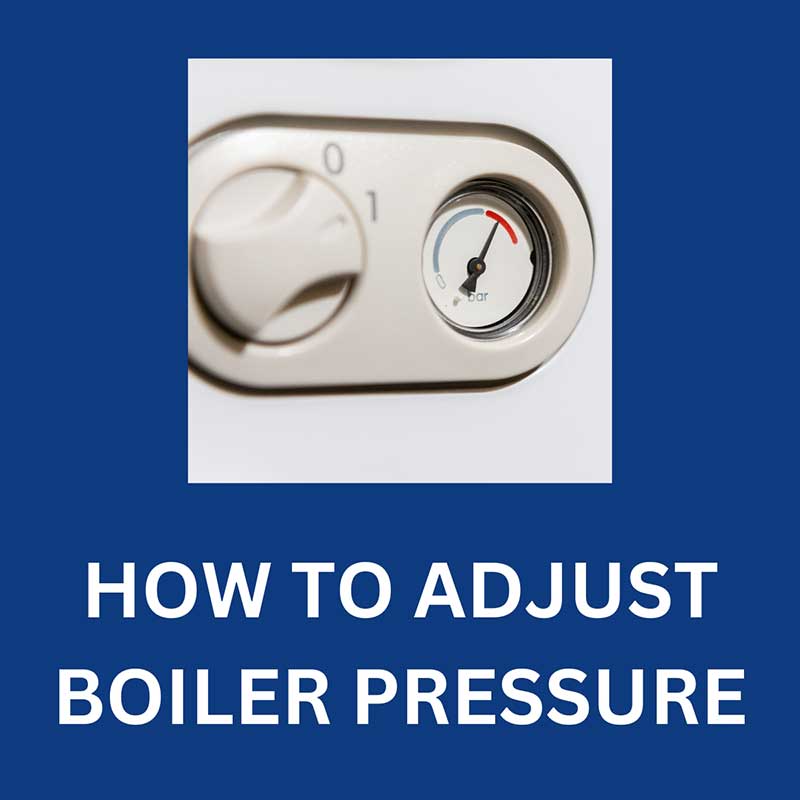
Boiler pressure and flow rates are important factors that help maintain the efficiency and safety of a Boiler and central heating system.
Proper Boiler pressure and flow rates are essential for optimal performance, reducing the risk of breakdowns, and increasing the lifespan of your Boiler.
In this article, we will provide you with an in-depth understanding of boiler pressure and flow rates, their importance, the causes of issues related to pressure and flow and ways to maintain optimal pressure and flow rates in your boiler system.
Boiler Pressure
Boiler pressure is the force of hot water inside your Boiler. This pressure is measured in pounds per square inch (PSI) or bar.
The optimal pressure range for most boilers is around 1.5 bar. Below 1 bar is too low, and above two is too high.
Boilers that run below or above the recommended pressure range can develop problems, such as decreased efficiency, leaks, and even breakdown.
Low Boiler Pressure
Low boiler pressure can occur for several reasons, including water leakage, faulty pressure relief valves, or limescale blockages.
When the pressure drops below the optimal range, your Boiler will have to work harder to heat water, consuming more energy, reducing efficiency and costing more to run.
When Boilers have to work harder, their working components will wear out quicker. Throughout its lifespan, your Boiler will need more repairs as a result and will need replacing sooner.
High Boiler Pressure
High boiler pressure is caused by overfilling the system with water, an open filling loop (it should only be open when filling the system with water), a faulty pressure relief valve or a faulty expansion vessel.
High pressure can cause the Boiler to leak and even cause damage to the Boiler and central heating system leading to costly repairs.
How To Check Your Boiler Pressure
Checking your Boiler Pressure will be done according to your type of Boiler. Combination Boilers are adjusted differently to System and Heat only type Boilers.
- If your central heating system doesn’t have a hot water storage cylinder, then you have a ‘Combination Boiler‘.
- If your central heating system has a hot water storage cylinder and no water tanks (usually in the loft or upstairs cupboard), then you have a ‘System Boiler‘.
- If your central heating system includes a hot water storage cylinder and water tanks, you have a ‘Heat Only Boiler’ (Aka ‘Regular Boiler’).
Checking Combination Boiler Pressure
There should be a dial on the front of the Boiler. Otherwise, you’ll have a digital indicator (on the LED or LCD screen)
The dial is a colour-coded pressure gauge with red and green indicators. If the dial’s on the red, the pressure is too high or too low. If it’s on the green, it’s ok.
Boiler pressure should be between 1-2 bar. 1.5 bar is ideal. It’s best to check the Boiler pressure when the heating is on, as it’s always lower when the heating is off.
Observe the dial when the heating is on. If it’s below 1 bar, then pressure needs adding if it’s above 2 bar, the pressure needs decreasing.
Checking System & Regular Boiler Pressure
System and Regular Boilers will have the pressure gauge on the Boiler or close to the water cylinder.
Check the pressure when the heating is on. It should be between 1-2 bars. If it’s under 1 bar, it’s too low; if it’s above 2 bar, it’s too high.
Adjusting Boiler Pressure
Adjusting Boiler pressure is simple and a task that can be undertaken yourself without needing to call an engineer. Follow these steps.
Increasing Combination Boiler Pressure
Switch your heating off and allow it to cool down. Underneath the Boiler is a filling loop, a flexible pipe with one or two valves, which should be in the closed position.
Open the valve or both valves (if you have 2) and watch the pressure rise on the gauge. Once it reaches 1-1.5 bars, close the valve(s) on the filling loop.
Increasing System/Regular Boiler Pressure
Ensure the heating is off and has cooled. Next, go to your hot water cylinder and locate the pressure gauge. It should have a filling loop with one or two valves. Both will be in the closed/off position.
Open the valve(s) and monitor the gauge. The pressure increases between 1-1.5 bar close to the valve(s).
Whether you have a Combination System or a Regular Boiler, the filling loop valves must be closed following pressurisation; otherwise, your Boiler and Central Heating system will become too high.
Decreasing Boiler Pressure
If your Boiler pressure is too high, try bleeding your radiators.
- Turn your heating off
- Locate the valve at the top of each radiator
- Have an old towel, rag or bowl at the ready to catch water
- Turn the valve with a radiator key
- Retighten once the radiator stops hissing, and water comes out
- Repeat with all radiators in your home
- Turn your heating on
- Check the pressure
- Add some more pressure into your system if it’s too low (see above)
Is Your Boiler Pressure Still Too High?
If your Boiler pressure is still too high, there are other methods to release pressure, such as opening pressure relief/safety valves and draining water from a radiator.
However, these jobs are for competent DIYers and should only be undertaken if you’re sure, so if necessary, contact an experienced Gas Safe Registered engineer.
Please get in touch with us if you live in the Essex area and need help with your Boiler pressure.
0% Finance
For Boiler Installations & Repair
